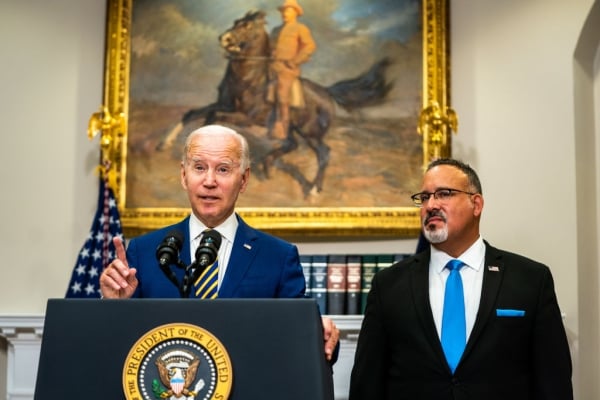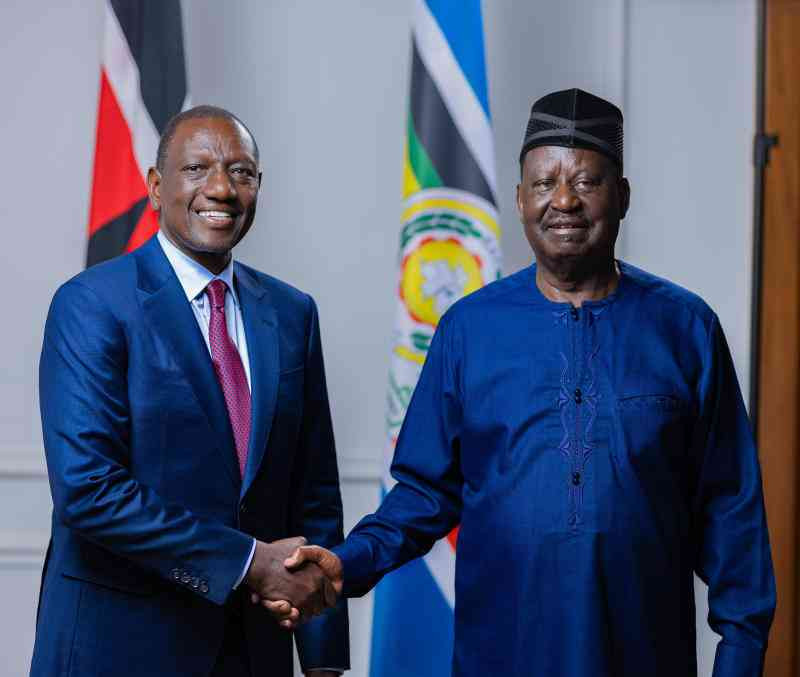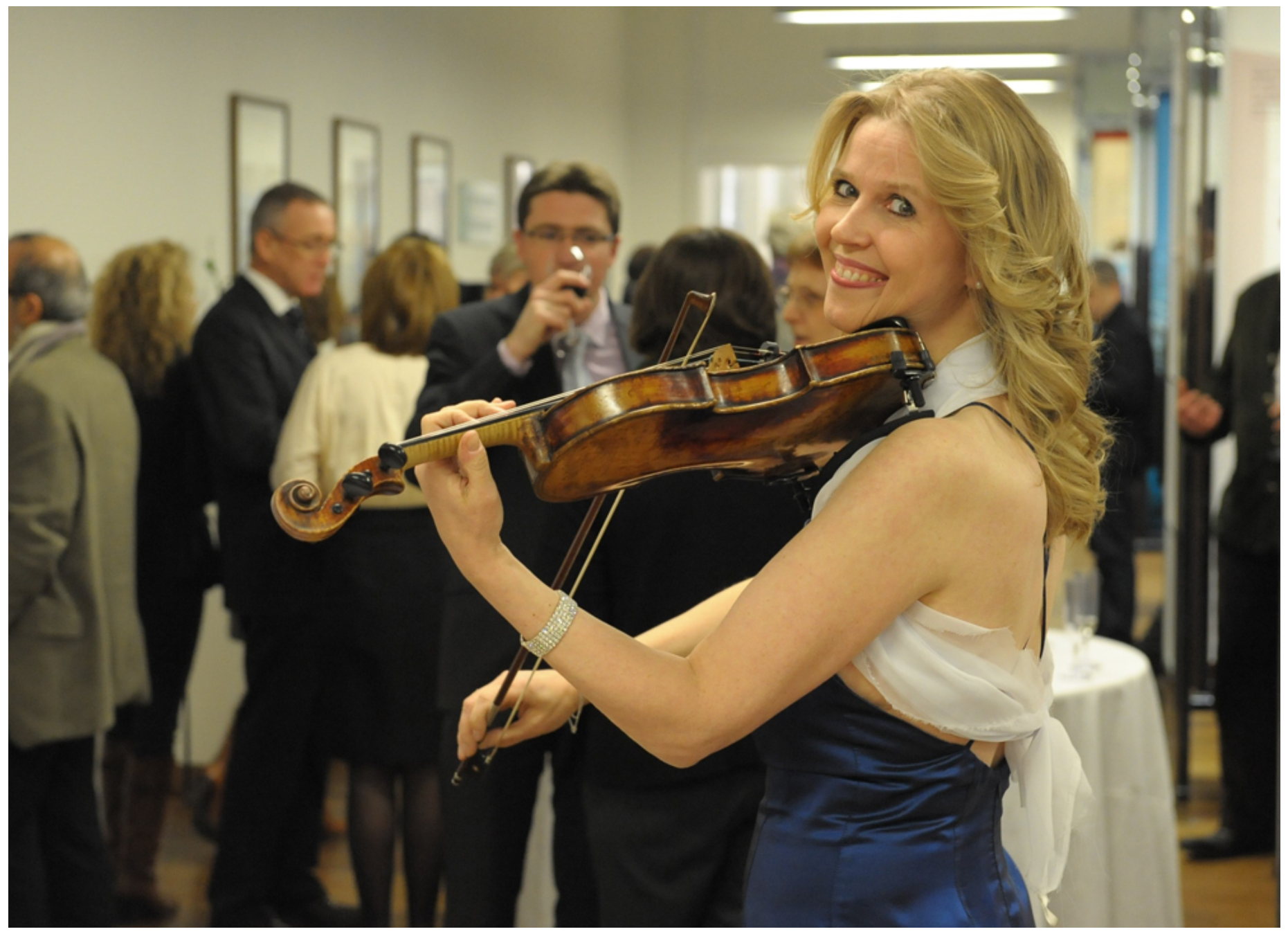The idea of being “bad at math” or “not a math person” is deeply entrenched in American education — for students and teachers alike.
But it doesn’t have to be, says Phonisha Hawkins, director of instructional excellence for secondary math at KIPP Texas Public Schools, a branch of the national KIPP charter network.
If we encourage teachers to be more confident in their own math abilities, Hawkins believes, the next generation of students will have stronger skills and greater confidence in math as well.
To do that, though, both students and teachers must understand how math works at the conceptual level — beyond memorizing formulas and learning tricks for getting to the right answer.
As a curriculum specialist in Houston, Hawkins combats math anxiety in the classroom by helping to demystify the concepts for teachers, and taking the subject off the page and bringing it to life for students (occasionally using chocolate chip cookies as a convenient learning tool).
For Role Call, our series where we feature unsung school staff members who help shape the day for kids, we spoke with Hawkins about how her job determines how teachers teach and what students learn — and the ripple effect that can have.
The following interview has been lightly edited and condensed for clarity.
Name: Phonisha Hawkins
Age: 42
Location: Houston, Texas
Title: Director of Instructional Excellence for Secondary Math
Current age group: Grades 6-8
Years in the field: 15
EdSurge: How did you get here? What brought you to your current role?
Phonisha Hawkins: I started off as a classroom teacher. I taught seventh grade math for five years. While I was teaching seventh grade math, my principal introduced me to a professional learning company for educators, and we attended training from that company to learn more about intervention in the classroom.
I began to really fall in love with intervention and what that means for our students and how it changed everything that I did in the classroom. From there, I went on to be an interventionist. I left and went back to the district that I was raised in, which is here in the Houston area, and I worked as an interventionist for four years focusing on sixth grade math.
After I did that, I decided that I wanted to work more with teachers and do more coaching. So then I became an instructional coach for a middle school, for sixth, seventh and eighth grade. That led me into my role as the district math specialist in my previous district. I was basically the face of middle school math. I was put in charge of leading the curriculum implementation of high-quality instructional materials, so from training, calendars, assessments, everything. And I did that for two years. We began to have visits from other districts who wanted to see how we were implementing the Carnegie Learning curriculum. When KIPP Texas also adopted Carnegie Learning, it was a role that almost, I wouldn’t say fell in my lap, but it just made a lot of sense because of the work that I had been doing for two years. So that is what led me to where I am now, at KIPP Texas.
When people outside of school ask you what you do — let’s say you’re at a social event with non-education folks — how do you describe your work?
I describe myself as a curriculum specialist. I think that’s the best way. People understand what a curriculum is, and they understand a specialist as being someone who has expertise in that area.
[Beyond that], I would first probably describe it as a person who manages all things curriculum — so basically exactly what I was doing at my last district. So I describe my role as someone who authors curriculum [and] writes assessments, and on a larger scale, you’re able to do that for an entire school district. That comes with training teachers on curriculum best practices, educational pedagogy, and how to deliver learning to a diverse group of students.
Education is not one-size-fits-all. So I also work with teachers on how to differentiate curriculum for the special populations of students they have in their classrooms. So overall, I would just say I implement, manage and conduct curriculum. I think people kind of get that, once I describe it that way.
Are you also helping to select the curricula for the district?
There are times when that does happen. A lot of times that happens above me, especially when we’re in a proclamation or adoption year. But generally what they’ll do is they’ll allow someone in my role or in the curriculum department to vet materials before they are selected. So you may have one, two or three companies that you’re looking at and you then get to vet those. So someone in my position would be able to do those kinds of things.
What does a hard day look like in your job?
In my role, for someone who loves curriculum as much as I do, a hard day would be when you’re trying to do what’s best for your teachers or what’s best for students, and you hit roadblocks of red tape when you’re trying to make those decisions. You know what needs to be put in front of students, what changes need to be made, what pivots need to happen, but you end up having to go through multiple layers of approval to get things done. And while you’re going through that whole entire process, you know that what your teachers need and what students need, they may not be getting right away. I think those have been my toughest days as a curriculum specialist.
Can you say a little bit more about that? Is it often a roadblock that’s a dead end, or is it a delay?
I would say more of a delay, like a flight that keeps getting pushed back. For example, with high-quality instructional materials, training and development for your teachers is an absolute must. You cannot implement the materials and not have the levels and anchors of support that you need. So one roadblock that I have run into is funding. Like if I needed to get specific training for my teachers — because I’m walking campuses, I’m talking to principals, I’m talking to instructional coaches, and we all may be identifying one specific area that we need to train our teachers in.
For example, conceptual learning. A lot of the instructional products have opened up our eyes to real conceptual learning, not just procedural math anymore. But a lot of teachers have only grown up and learned and trained under procedural learning. So understanding that, hey, I do need this training for our teachers. I can deliver it, but I need the manpower to help me deliver it. And so one roadblock that I’ve run into is a funding issue — a particular vendor saying it’s going to cost this much, and now we have to go through all the nuances of budget approval in order to make that happen. But all the while, the teachers and the students still aren’t receiving what they need.
So that would be a perfect example of just a hard or frustrating day for me, knowing what teachers need and knowing that I’m responsible for making sure that they get that.
With the example you gave of conceptual learning versus procedural learning, if conceptual learning is a more recent development in how to teach math, how do you learn about those things so that you’re equipped to then teach and communicate that to other teachers?
The joke that I always make is I was raised in a different time in education, although it’s only been 15 years. My first five years were so critical to my development as an educator. I was very blessed because I had a team, I had an instructional coach, and then I also had my assistant principals and my campus principal who really poured into our learning. There was always training and development going on. And that training and development pushed me to be a better teacher.
One of the simplest things that I ever did was — and this came from one of my special education co-teachers — is he said, ‘Hey, we need to start figuring out how our kids learn.’ And so we started giving our students a learning style survey, and it would tell us if they were tactile, visual or auditory learners, and we would then scope our curriculum or lesson plans, making sure that we’re hitting all of those. It helped me to be a more conceptual learner. The difference, of course, is that procedural is going to be your step-by-step math.
One of the best examples I think that anyone can identify with is dividing fractions. In dividing fractions, you can use ‘keep, change, flip.’ That’s the trick. The conceptual part is, why does that work? Why is dividing by the fraction or multiplying by the reciprocal going to get you the same thing? And so teachers will teach, ‘keep, change, flip,’ but they don’t tell students why it works. So when students get a word problem or they get something that’s unlike what you’ve given them before, the learning doesn’t stick.
I was very fortunate to, like I said, have leaders who understood instruction, and they understood what I needed. Having the opportunity to go to so many different trainings and learn so many different things from great educational leaders, I don’t see that as often now as I did 10 to 12 years ago. It is a little bit different, but I also think that the next part to that is as a teacher, you have to grow better.
So if your district or your school may not have the money to send you to these trainings, YouTube is perfect. I would go on YouTube a lot and just do a lot of research myself to figure out what other people are doing. How are other people teaching this? A lot of times the teacher down the hallway is your best professional learning resource because you both are teaching the same thing, but they’re probably teaching it in a different way. You can learn from other educators in your building.
What does a really good day look like in your role?
A good day in my world is me being able to walk into a classroom, and I hear students talking about math. I don’t hear or see the teacher at the front saying, ‘Copy what I just wrote down on the board.’ I’m actually walking into a classroom and I get to see students using prior knowledge to arrive at a solution. They’re having conversations — I like to call them math fights. Whether they agree or disagree, they can talk to each other about what they’re learning.
So recently, we were doing a fraction division, and I was working with one of the teachers, and I said, ‘Hey, let’s bring this off the page for the kids a little bit. Let’s make the learning real for them.’ We brought in chocolate chip cookies so the students were able to model, like, three divided by three-fifths. They were able to model that with the actual cookies, having a little plastic butter knife and cutting the cookies up into fifths and then saying, ‘OK, well this is three, and this is three.’ Just watching the students learn conceptually, and not just using a trick or just writing down whatever they see in their textbook — that was a really good day for me.
The teacher got some great data at the end of the day, too, because we have to do exit tickets. So we’ll do one to two questions at the end of the lesson just to make sure the kids got it, and if they didn’t, what can we do to pivot? And that teacher had over 80 percent of her students exceed the mark on an exit ticket. And when she texted me at the end of the day, she said it was because of the cookies. They got it with the cookies.
For me, that was a really good day because she was happy with her data, and the students were learning — they were eating cookies as they were learning. It was a good day to see curriculum come to life for students. And you can see math anxiety decreasing in a classroom like that.
What’s an unexpected way your role shapes the day for kids?
The decisions that someone like me makes directly affects student achievement. Like we just talked about with the cookie example, if I had not suggested and showed that teacher how to model this with cookies, would her exit ticket data have been that high? If I hadn’t challenged them to understand why ‘keep, change, flip’ works, would her exit ticket data be that high? And not necessarily even the data, but would the kids have actually learned what we needed them to learn for that day?
So for someone in curriculum, our day-to-day decisions make all the difference in what goes in front of kids. If we have an assessment that we write, and it’s two questions too long, then you have students who have math anxiety because the bell’s about to ring, and they’re like, ‘I didn’t finish my test. Now I’m nervous.’ So every decision that we make as curriculum specialists affects teachers and students.
What do you wish you could change about your school or the educational system today?
The biggest thing I would love to see is an increase in leaders who are truly making decisions for students. And what I mean by that is a lot of times, as we get further and further from the classroom ourselves as teachers, you can begin to think more about the bottom line or the dollar versus what you think is best for students. And as you get further and further away from the classroom, the bigger and bigger your role is in the decision-making. So what I would love to see is the system of education, the system of math, be more focused on what’s really best for students, not what makes it comfortable for us.
I’ve seen a lot of leaders demand excellence from their teachers, but no one’s there to hold them accountable as leaders. So if we’re expecting our teachers to rise to a specific level of excellence, we need to do the same for our instructional leaders. And I think, that way, we can make a dent in the system and do what’s best for students.
Another one would be teacher efficacy. It’s something that I’ve studied and researched and looked at on my own. When a teacher comes into the classroom with math anxiety or a dislike for math — and this is honestly what truly happens — that pours into students. So now we’re raising a new generation of students who still hate coming to math class. When they come to math class, they’ll say, ‘I’m just anxious. I can’t do math.’ And you’ll hear kids say that: ‘I’m not a math person. I can’t do this.’ We need to [invest in] our teachers more, all of our teachers — I’m very partial to math — but we need to decrease student math trauma by increasing our own efficacy as teachers.
Your role likely gives you unique access and insight into today’s youth. What’s one thing you’ve learned about young people through your work?
We don’t give young people enough credit. I hear teachers say more times than not what the students can’t do. But if you let them talk, if you actually form a line of communication with your babies and let them talk, they’ll tell you more than you think they know. Teachers need to trust their students more, especially math teachers. They know more than we give them credit for. And I think if we nurture that, we’ll be able to see a much more well-rounded student.











![What Does It Mean to Be AI Ready? [Infographic] What Does It Mean to Be AI Ready? [Infographic]](https://edsurge.imgix.net/uploads/post/image/16089/ES_GCPS_HERO-1731772617.png?auto=compress,format&w=1024&h=512&fit=crop)









Discussion about this post